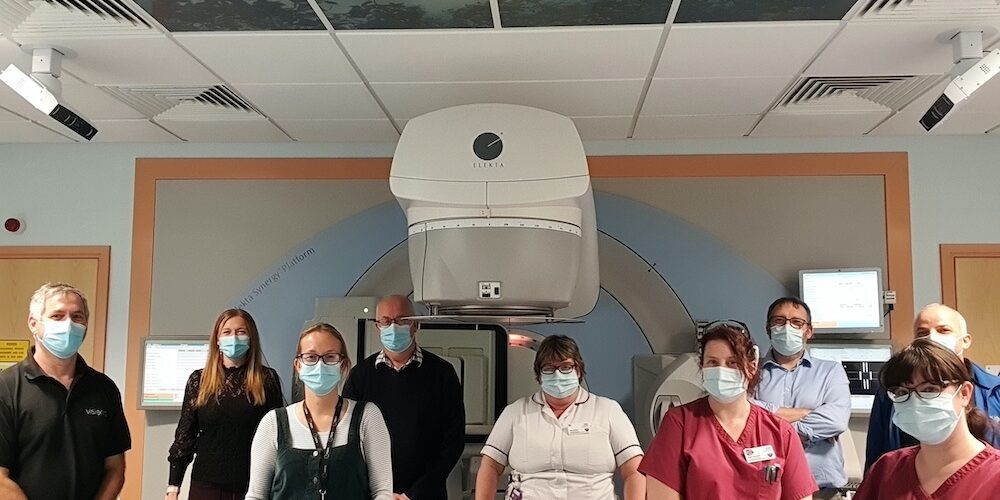Vision RT has agreed a contract with The Christie NHS Foundation Trust in Manchester for the installation of 11 Surface Guided Radiotherapy (SGRT) Systems.
These new systems will be installed across all four of the Christie’s treatment centers and fully integrated into both existing Varian and Elekta Linear Accelerators as well as Philips CT Scanners. This investment will initially form part of the hospital’s drive to expand and upgrade their Deep Inspiration Breath Hold (DIBH) service.
DIBH is a technique to move a patient’s heart further away from the radiation beam during treatment for left breast cancer. The proximity of the left breast to the heart leaves the heart vulnerable to radiation exposure. This has been shown, in some cases, to lead to serious long-term cardiac complications¹.
Key factors in The Christie’s decision to choose Vision RT technology is that it is contactless and non-invasive – an important factor in meeting the hospital’s infection prevention standards.
AlignRT uses proprietary 3D stereo cameras to monitor the patient’s surface in all 6 degrees of freedom, in real-time, comparing the live surface with the planned position in sub-millimetric and sub-degree accuracy. This ensures that radiation is delivered exactly as planned, in the case of DIBH this means the radiation beam is only enabled with the patient is at the correct breath hold level and the beam is automatically paused if the patient leaves this position, for example due to the patient arching their back or falling out of breath hold.
There are 20 published papers covering the use of AlignRT for DIBH and a recent study at the University of North Carolina, patients were treated using AlignRT for DIBH. Of these, 0% exhibited radiation-induced abnormalities in blood flow to the heart six months after treatment2.
Installation of the new AlignRT systems will begin immediately, with expanded DIBH service being made available to patients in January. Once the service is up and running, The Christie plans to expand its use of SGRT with AlignRT, as well as the future potential for tattoo and mark-free radiation therapy.
Jo Taylor is a breast cancer patient at The Christie Hospital and founder of @abcdiagnosis, an organisation supporting primary and secondary breast cancer patients to make informed choices. She was involved in the discussion process around access to DIBH and said: “As a patient, avoiding long-term side effects is a big concern during cancer treatment and more and more of us are learning about the advantages of being treated with SGRT. Also this addressed inequalities of care for primary cancer patients in the NHS. I’m really glad that the Christie are implementing this new system for better outcomes.”
Prof Pat Price MA MD FRCP FRCR, Chairman of Action Radiotherapy, the UK’s only charity dedicated to improving radiotherapy treatment, said: “It’s encouraging that NHS hospitals are beginning to catch up with US and UK private sector in SGRT provision. There is still much work to be done to bring NHS radiotherapy provision to the same level as other countries, but this major decision by The Christie is a strong step in the right direction and they should be congratulated for making the investment in patient safety at such a crucial time.”
The Christie in Manchester is one of Europe’s leading cancer centres treating 44,000 patients every year.
- Darby et al. Risk of Ischemic Heart Disease in Women after Radiotherapy for Breast Cancer. N Engl J Med 2013; 368:987-998
- Zagar et al. Prospective Assessment of Deep Inspiration Breath Hold to Prevent Radiation Associated Cardiac Perfusion Defects in Patients With Left-Sided Breast Cancer J Appl Clin Med Phys. 2015 ;93:3S 2027


 Back to newsroom
Back to newsroom